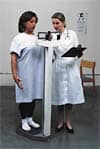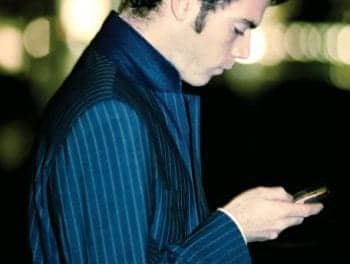The Atlanta School of Sleep Medicine expands its services west of the Mississippi.
When the Atlanta School of Sleep Medicine and Technology opened its doors in Georgia in 1992, it focused on offering courses to help physicians prepare for board examinations. Over the years, the research and clinical training facility expanded that focus to include courses for polysomnographic technicians and other allied health care professionals, as well.

“Initially, there were not a lot of training opportunities in sleep medicine. In the early 1990s, there just wasn’t much of a selection,” says Gail Reid, MEd, the school’s education coordinator.
The school—which is affiliated with Northside Hospital Sleep Medicine Institute, an American Academy of Sleep Medicine-accredited center and sleep laboratory adjacent to the facility—offers a variety of courses on-site and off. The school began paying closer attention to its off-site offerings on a larger scale last year. “About 2 years ago, we began to take a look at our demographics because we were amazed that people were coming to us from all over the country and, in fact, all over the world,” Reid says. “We saw that as many as a third of our students came from west of the Mississippi, and we thought why not be more customer service-oriented, more receptive to everyone’s need, and expand our offerings and make them available west of the Mississippi? We always had a significant backlog in Atlanta. Our courses are always filled, so we thought this is one way to make it attractive to people: less traveling,” she says.
The expansion efforts are focused on the West Coast. In January, the school presented a course titled “Clinical Polysomnography” for the first time in San Diego, and will offer it there again in July and October. The course, which is a standard offering for the school and presented many times a year, can be taken as a 5-day or 8-day class. The 8-day course, designed for technicians and trainees, provides comprehensive training on the technical aspects of polysomnography. The class overlaps with the 5-day course, which is geared toward physicians. Together, the students learn more about polysomnography, such as scoring, as well as a wide range of sleep disorders, including their diagnosis and treatment. The courses use computers to teach scoring, which, combined with the lecture, creates a more useful and practical hands-on approach to learning. To find out more, visit the school’s Web site at www.sleepschool.com.
“We have a graduated or step-wise approach so that the technicians learn their specific skills initially. We spend the first part of the 5-day course focusing on polysomnography and its analysis, which the students practice; and then from there, we build toward an understanding of various aspects of sleep disorders from different disciplines, such as pulmonary neurology and ENT; and then we finish with some case presentations,” says Terrence Malloy, RPSGT, lead instructor.
“By the end of the week, our goal is that the technologists have a very good, but rudimentary understanding of the technical data acquisition process—applying electrodes, marking and measuring for EEG, and where you place the other electrodes and sensors—for a sleep study,” says Russell Rosenberg, PhD, the school’s director. “We expect, by the end of the week, that they are able to readily recognize sleep stages and begin at a very early point their scoring capabilities. They’re not expert scorers; no one’s an expert scorer in 8 days. We don’t pretend that these are all people who are ready to fully work independently, but this gives them a tremendous jump start on many people who haven’t had a chance for training.”
Enrollment in “Clinical Polysomnography” is limited to 20 students, which provides an opportunity for students to exchange ideas and concerns with each other. The course also helps resolve any misconceptions they may have about sleep medicine. “Many people think of sleep apnea as the primary sleep disorder, the one they know most about. They come to appreciate that there are many other disorders that can exist with sleep apnea or separately in patients,” Malloy says. “In this combined class, the technicians come to get a better understanding of the physicians’ role, and their diagnostic process and management; and then, on the other hand, the physicians come to appreciate the work of the technicians.”
The Atlanta School of Sleep Medicine and Technology also conducts various special topic courses throughout each year, in Atlanta and off-site. “What we wanted to do was bring in people and topics that were relevant to more than the practice of sleep medicine, and technology,” Rosenberg says.
In October, it will offer a course titled “Hot Topics in Sleep Medicine” in Vermont. “It’s an opportunity for us to do something to expose physicians to more cutting-edge research and more clinical findings,” Rosenberg says.
Other special topic courses being offered include “Pediatric Sleep Medicine,” “Surgical Treatment of Obstructive Sleep Apnea,” and “Keys to a Successful Sleep Business Practice.” “The nucleus of doing these kinds of continuing education courses started when several physicians who had come to us through the years for introductory and then advanced courses, and went on to become board certified, asked, ‘Is this the end of learning in sleep medicine?’” Reid says. “They wanted to continue and know what’s out there. We want to be responsive to those needs.”
Enrollment limits in the special topic courses are higher than for the “Clinical Polysomnography” classes. The student population in the courses is usually divided equally between two groups: physicians and technicians/nonphysicians, including those in respiratory therapy, nursing, or the allied health care field. “The medical field as a whole continues to further its understanding of the impact of sleep loss, and the physiologic consequences of, particularly, sleep apnea,” Malloy says.
Students can earn credits by completing the courses. Physicians earn CME credits through the Accreditation Council for Continuing Medical Education, while technicians earn contact hours or continuing education units through the Association of Polysomnographic Technologists and the American Association for Respiratory Care.
Danielle Cohen is associate editor of Sleep Review.




